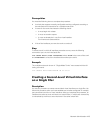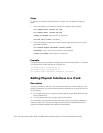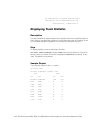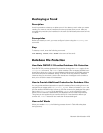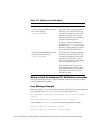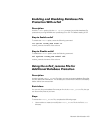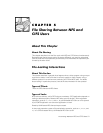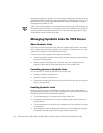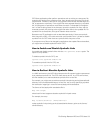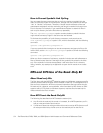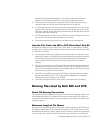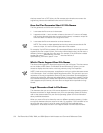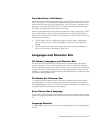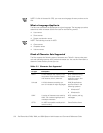
File Sharing Between NFS and CIFS Users 5-1
&+$37(5
)LOH6KDULQJ%HWZHHQ1)6DQG
&,)68VHUV
$ERXW7KLV&KDSWHU
$ERXW)LOH6KDULQJ
This chapter describes how the filer works with NFS and CIFS clients simultaneously.
Because these clients interact with a file server differently, you need to understand
how the read and write operations performed by one client affect the operations per-
formed by the other client.
)LOH/RFNLQJ,QWHUDFWLRQV
$ERXW7KLV6HFWLRQ
This section describes in general what happens when a client program using one pro-
tocol tries to read or write a file that is currently used by a client program using a
different protocol in an environment consisting of CIFS and NFS users. For details
about locking in a particular protocol, consult the documentation for that protocol.
7\SHVRI&OLHQWV
There are CIFS clients and NFS clients.
7\SHVRI/RFNV
NFS locks are advisory, while CIFS locks are mandatory. CIFS applications depend on
locking to behave properly. Because NFS locks are only advisory, file-manipulation
operations, such as
rm
,
rmdir
, and
mv
, by a UNIX-based NFS client on a file opened
by a (PC)NFS application can cause the application to crash.
Reads by UNIX-based NFS clients always succeed.
A deny-write operation causes a file-manipulation operation, such as
rm
,
rmdir
, and
mv
, on a CIFS-accessed file by a UNIX-based NFS client to fail.



